|
The other day I visited David Reigle’s
excellent web site of the Eastern
Tradition Research Institute and found again his paper
on “The
Centennial Cycle.” In this paper he discusses the
origin of the policy by the Brotherhood of Mahatmas of enlightening
the “western barbarians” on a centennial basis.
Here I read that the very last of the Druid mystery schools
in Europe was according to H.P.B. at Bibracte
in Burgundy, France.
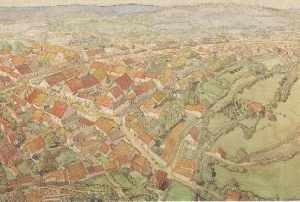
Drawing of Bibracte
as it might have looked like 100 B.C.E.
Bibracte was the capital of the Celtic tribe the Aedui
and around 50 B.C.E. Caesar conquered this important Celtic
settlement during his Gallic campaigns. During the reign
of Augustus its inhabitants left the place for the newly
founded Augustodonum (Augustus-city, now Autun) 14 miles
east and nobody else replaced them, leaving the site pristine
for archeologists to uncover 1900 years later.
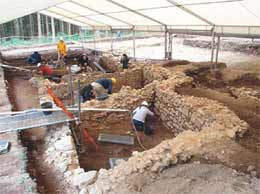
Digging out Bibracte
Apparently after this loss the Brotherhood instituted its
policy of sending every last quarter of a century somebody
to instruct the West in the Wisdom-Religion, with H.P.B.
being the one for the 19th century cycle.
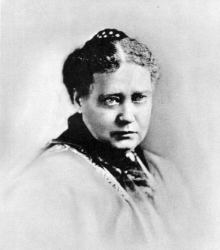
Helena Petrovna Blavatsky
H.P.B., in her posthumously published article “The
Last of the Mysteries in Europe,” quotes J.M. Ragon,
a 19th century author on Masonic lore, with apparent approval
from his Orthodoxie Maçonnique:
 |
… Bibractis,
the mother of sciences, the soul of the early nations
[in Europe], a town equally famous for its sacred college
of Druids, its civilisation, its schools, in which 40,000
students were taught philosophy, literature, grammar,
jurisprudence, medicine, astrology, occult sciences,
architecture, etc. Rival of Thebes, of Memphis, of Athens
and of Rome, it possessed an amphitheatre for gladiators,
surrounded with colossal statues and accommodating 100,000
spectators, a capitol, temples of Janus, Pluto, Proserpine,
Jupiter, Apollo, Minerva, Cybele, Venus and Anubis,
and in the midst of these sumptuous edifices the Naumachy,
with its vast basin, an incredible construction, a gigantic
work wherein floated boats and galleys devoted to naval
games; then a Champ de Mars, an aqueduct, fountains,
public baths; finally fortifications and walls, the
construction of which dated from the heroic ages. |
| |
She then stated:
 |
Such was the
last city in Gaul wherein died for Europe the secrets
of the Initiations of the Great Mysteries, the Mysteries
of Nature, and of her forgotten Occult truths. |
| |
I did this search because in a class at Olcott, the headquarters
of The Theosophical Society in America (Adyar), we were
looking into possible candidates of the 1975-2000 cycle
and we discussed criteria for evaluating the candidates.
Reigle in his paper develops a position in favor of the
Dalai Lama and the Tibetan Buddhist diaspora as the 20th
century effort of the Mahatmas.
Peculiar coincidence is that I visited Bibracte many times
in my life as my aunt bought in the 1970s an old farmhouse
in the hamlet Les Jours at the foot of Mont Beuvray on which
top Bibracte used to be and the farm is the closest inhabited
structure to the site!
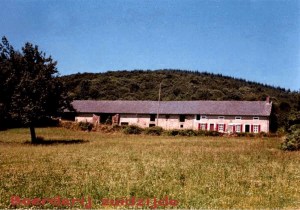
My aunt's farmhouse at Les Jours
I knew that the leader of the Gauls, Vercingetorix, had
camped there and that Caesar had stayed there as well for
a winter after defeating the Gauls and, while there, wrote
his book on the Gallic campaigns, Commentarii de Bello
Gallico.
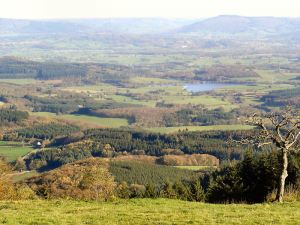
View from Mont Beuvray
But I had no idea that this place on top of the hill, now
known as Mont Beuvray, next to my aunt’s farmhouse,
also was a Celtic center of occult learning–the last
one of its kind in Europe—and that its loss lead many
centuries later to the founding of the Theosophical Society.
At least according to H.P.B. It is now a prime archeological
site with a very nice museum displaying their finds and
reconstructions of Celtic life.
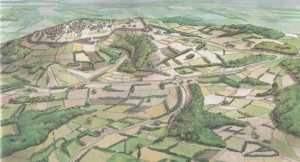
Reconstruction of the area of
Mount Beuvray (1st century B.C.E)
One memorable summer in the 1980s I spend in Les Jours
with my aunt and grandfather, who was a Mason, while reading
and discussing Yates’ academic study The Rosicrucian
Enlightenment and Michael Baigent’s pseudo-historical
Holy Blood, Holy Grail and through these books getting
a feel for the “hidden tradition” of western esotericism.
I would have gone to Les Jours again and join my family
in August 2009 to celebrate my own half-centennial, but
this plan fell through. I intended to do some research there
and see what claims by H.P.B. and Ragon can be verified
against the archeological record.
From what I read Ragon’s claims made about Bibracte
are quite erroneous or, in H.P.B.’s words, “utterly
incorrect”, as she qualified another of his claims.
Bibracte was a fortified hill-town and none of the grand
structures, which Ragon writes about, were ever erected
there. It looks like, and he is not the only one, that he
confused Bibracte with the nearby town of Autun, which does
have a big Roman amphitheatre, though it ‘only’
seats 17.000, and has a temple dedicated to Janus. Many
historians and archeologists in Ragon's days thought that
the correct location of Bibracte was to be found in Autun.
But this was only a hypothesis. The other candidates were
Beaune and Mont Beuvray. Only the excavations by the French
archeologist Jacques Gabriel Bulliot in the late 19th century
confirmed the location to have been on Mont Beuvray.
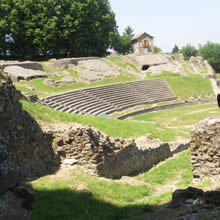
Roman Amphitheater at Autun
The problem here is that Autun did not exist before Caesar’s
time as it was founded in Augustus’ reign replacing
Bibracte as the capital of the Aedui about 20 kilometers
(12 miles) east. The other problem is that Ragon ascribes
to the Celts feats of architecture and pastimes which are
distinctly Roman and were quite out of reach for the more
simple Celts.
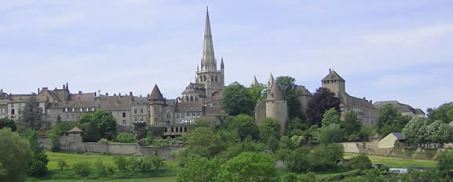
View of Autun
It looks like H.P.B. was a little careless in taking over
wholesale these claims by Ragon about Bibracte, even while
she was aware of Ragon’s shortcomings as a historian
as she warned her readers that “[h]owever learned and
erudite, some of the chronological mistakes of that author
are very great.”
What has to be done is to sort out in more detail all the
claims and think through the possible implications of the
findings, especially addressing the question whether H.P.B.
was unto something, but was incorrect in certain details,
or if she was constructing her own mythic historiography
by selectively appropriating Ragon’s Masonic (mis-)construals
of history.
One way or another the gap of cognitive dissonance between
the Blavatskyan, emic, esoteric perception of history and
the etic, scientific perception of history has to be bridged.
Govert Schuller
Wheaton, July, 2009
|

